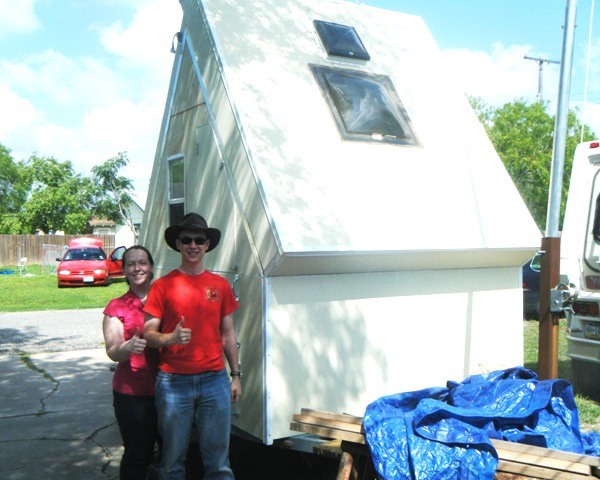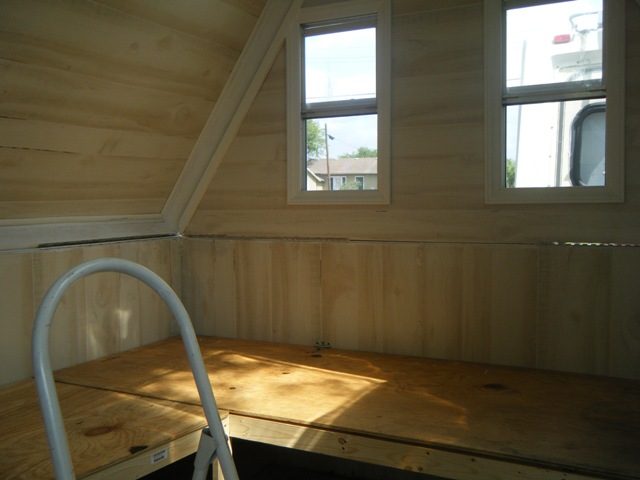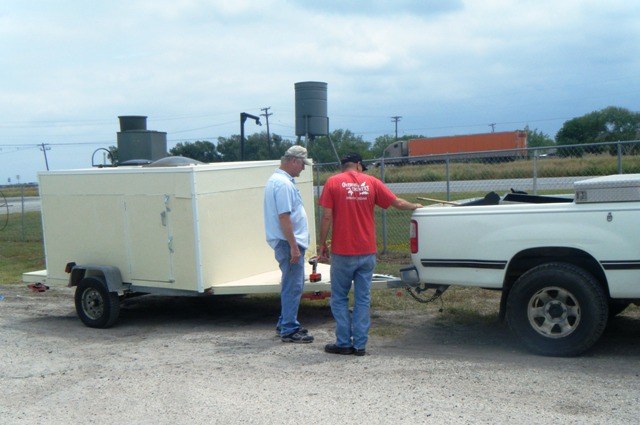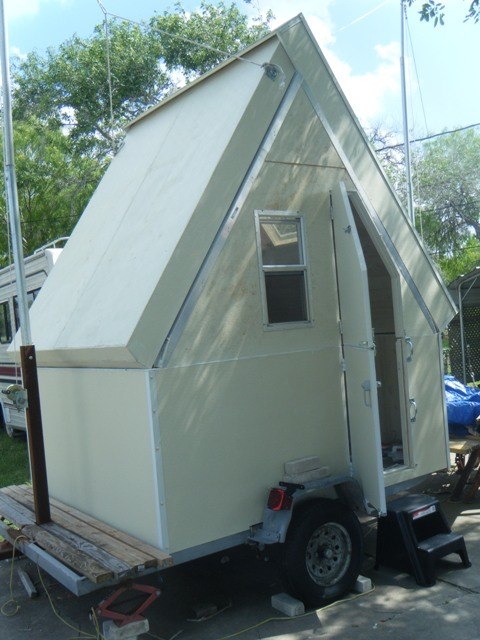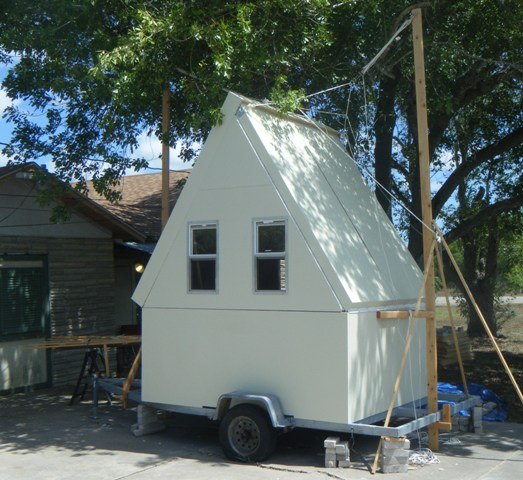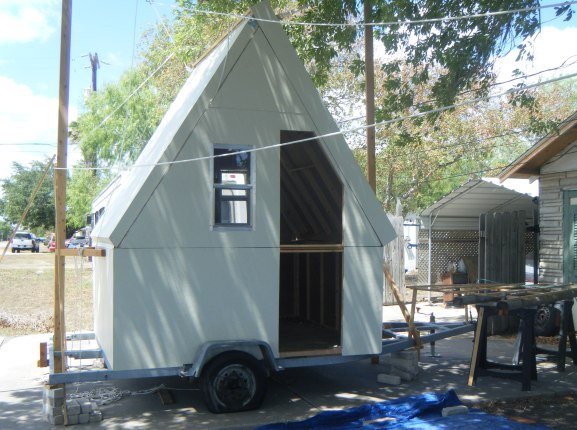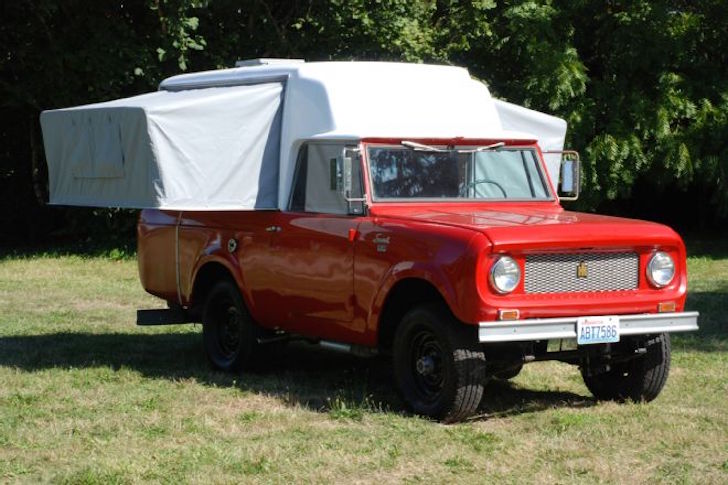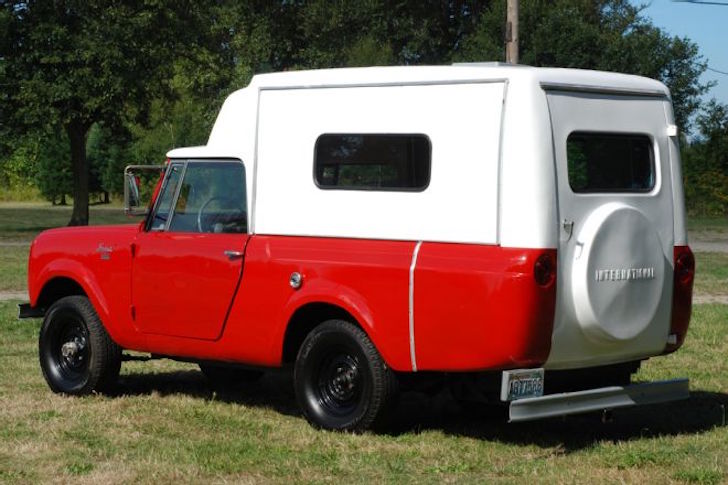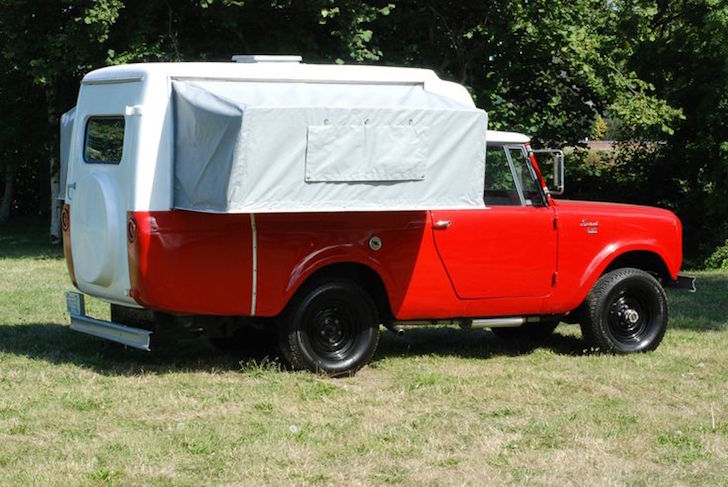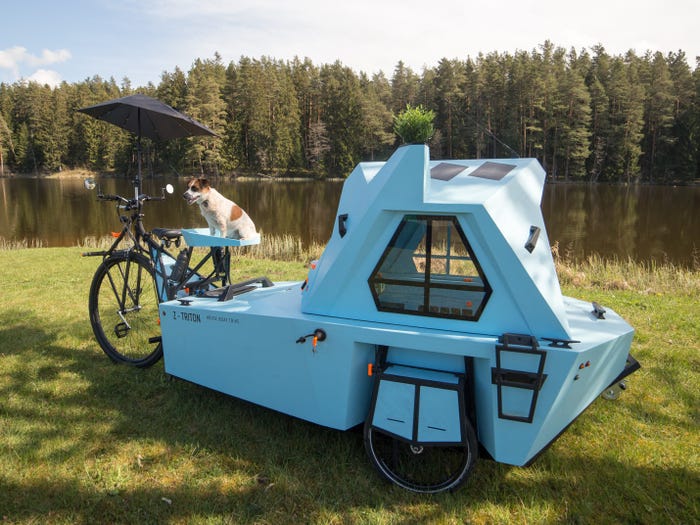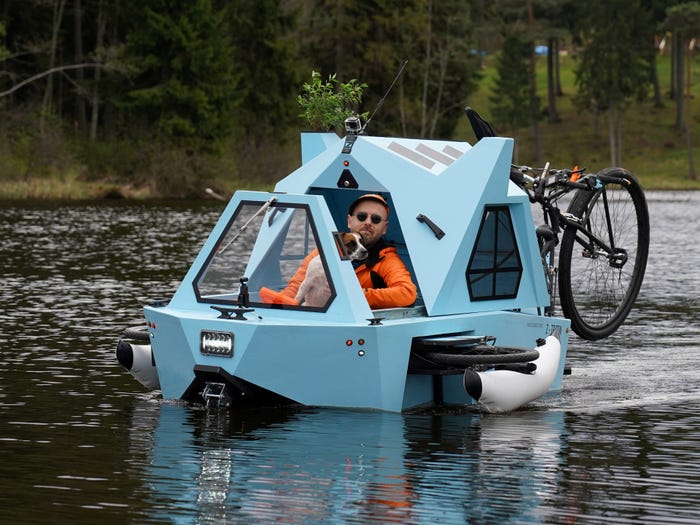OP827 wrote:I am curious how the roof between the two trailers is made watertight, or it is not watertight and then during the rain these two travelers sleep each in a separate tent?
Good question, and I don't really know, but here is my guess:
Notice the roof in the picture (which looks like a real photo to me) is very different than the one in the animation. My guess is that the (nearly flat) roof of the left half becomes the common wall of the right unit (the one with the "hump roof") if/when the right is used by itself. If so, it is probably permanently attached to the hump and the left unit is never used by itself. But the left half roof is so flat, I would not want to use it in rain. Anyway, that is my best guess so far. Maybe some more info/pics will tells us the real story.
By the way, one of the comments to the video has a great idea for matching identical units: build all units with a single plane roof slopping away from the common wall, and join 2 (with trailers pointing in opposite directions) so the pair forms a single peak above the common wall. That just might work, or at least be far more resistant to rain.
An obvious alternate way to pair identical units while getting rid of the valley above the common wall: build the roof ridge of each unit side-to-side (rather than end-to-end as shown) so when they are joined the peaks align. But I find the reader's recommendation a more practical idea.
PS (3/29/2022)
As pesky as the roof seam may be, perhaps the wheels present an even bigger mystery. The picture shows the wheel outside the body sidewall, so as you bring one trailer along side the other, the wheels prevent conjuncture of the sidewalls. But I see no gap between the unit bodies (rear wall view), so did he remove the wheels to join them? It would be very awkward to remove the wheels and then maneuver the single wheeled units into alignment.
I found another picture

of what is almost certainly the same trailer(s), adding evidence it is not a complete hoax. The bed does appear to be elevated above the tops of the wheels, but the gap between the two units does not appear wide enough to span the wheel widths.
